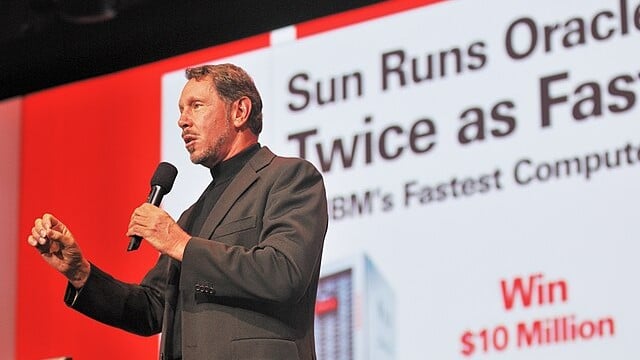SBFC Finance Pvt. launched its initial public offer on Thursday, which will close on Aug. 7.
The company’s IPO has a total offer size of Rs 1,025 crore, of which Rs 425 crore worth of shares will be allocated through the offer for sale.
The company aims to cater to the untapped 85% of micro, small, and medium enterprises that don't have access to organised finance across India. Of the estimated seven crore MSMEs across India, approximately 1.69 crore have registered on Udyam, as of June 30, according to CRISIL.
Issue Details
Issue opens: Aug. 3, 2023.
Issue closes: Aug. 7, 2023.
Total issue size: Rs 1,025 crore.
Face value: Rs 10 per share.
Fresh issue size: Rs 600 crore.
Offer for sale size: Rs 425 crore.
Shares for fresh issue: 10,52,63,157 shares.
Shares for offer for sale: 7,45,61,404 shares.
Price band: Rs 54 to Rs 57 per share.
Lot size: 260 shares.
Listing: BSE and NSE.
The company has undertaken a pre-offer placement of 2,72,72,727 equity shares, for a cash consideration of Rs 150 crore. Consequently, the size of the fresh issue has been reduced by Rs 150 crore to Rs 600 crore.
Business
SBFC Finance, specialises in secured MSME loans and loans against gold. Its assets under management witnessed growth, with a CAGR of 44% from fiscal 2019 to fiscal 2023.
The company caters to entrepreneurs, small business owners, and self-employed individuals, with a primary focus on underserved customers in tier-2 and tier-3 cities. With 152 branches in 120 cities across 16 states and two union territories, the company has a nationwide presence, which helps maintain low levels of AUM concentration per state.
Use of Proceeds
The company plans on using the proceeds of the IPO to:
Augment the capital base to meet future capital requirements arising out of the growth of businesses and assets.
Promoter selling shareholders will receive the proceeds from the offer for sale after deducting proportions related to the offer.
As per the capital adequacy norms issued by the Reserve Bank of India, the NBFC is required to have a regulatory minimum capital to risk weighted assets ratio of 15%, consisting of Tier-1 and Tier-2 capital. They are required to maintain a Tier-1 capital of 10% at all times.
As of March 31, the company’s CRAR was Rs 1,413.58 crore (equivalent to 31.90%), of which the Tier-1 capital was Rs 1,404.95 crore (equivalent to 31.71%) and Tier-2 capital was Rs 8.62 crore (equivalent to 0.19%).
Risk Factors
Risk of non-payment by borrowers, particularly self-employed individuals and MSMEs, which could adversely impact its business and financial condition. As of March 31, 81.33% of their total AUM of secured MSME loans comes from self-employed customers.
Higher levels of non-performing assets may impact the quality of the company's portfolio and could adversely affect its business if it fails to adequately provide for these NPAs. As of end of FY23, the GNPA, NNPA and provision coverage ratio stood at 2.43%, 1.41% and 42.04%, respectively.
The inability to recover full collateral or outstanding amounts from defaulted loans may adversely affect the company's business and financial condition.
Collateral risks may lead to declining property values, inadequate documentation, and challenges in title verification, impacting loan recovery and incurring additional expenses.
Gold collateral risks include potential loss exceeding collateral value, due to declining gold prices, challenges in realising assessed value, uncertainties in timely auction sales, and employee fraud in collateral appraisal, leading to bad debt.
The business has significant capital requirements, and any disruption in their capital sources may adversely impact the financial condition and results of operations.
Interest rate risk poses a significant vulnerability to business, with volatility affecting net interest income, net interest margin, and overall results of operations and cash flows. In FY23, 88.36% of total income originated from interest earned.
Credit rating downgrade may raise borrowing costs, hinder financing access, and adversely impact the business.
Watch This Conversation On The IPO:
 RECOMMENDED FOR YOU
RECOMMENDED FOR YOU

Upcoming IPO: Chartered Speed Files Draft Papers To Raise Rs 855 Crore Via IPO
 Sep 05, 2025
Sep 05, 2025

Goel Construction Company IPO: Price Band Set At Rs 250-263 Per Share
 Sep 01, 2025
Sep 01, 2025

Fractal Analytics IPO: TPG-Backed AI Company Files DRHP For Rs 4,900 Crore Offer — Check Details
 Aug 13, 2025
Aug 13, 2025

Knowledge Realty Trust REIT IPO Gets 3.4 Times Subscription On Day 2 Of Offer
 Aug 06, 2025
Aug 06, 2025

